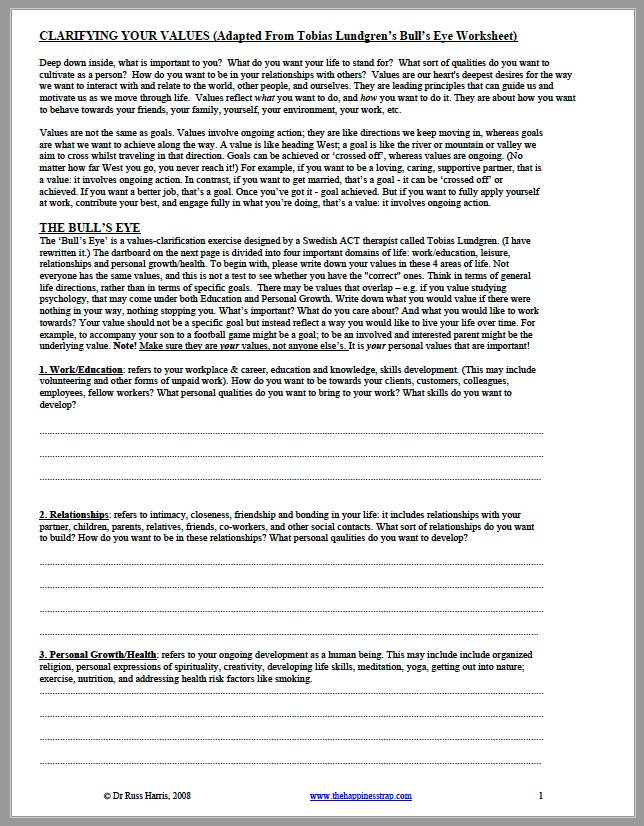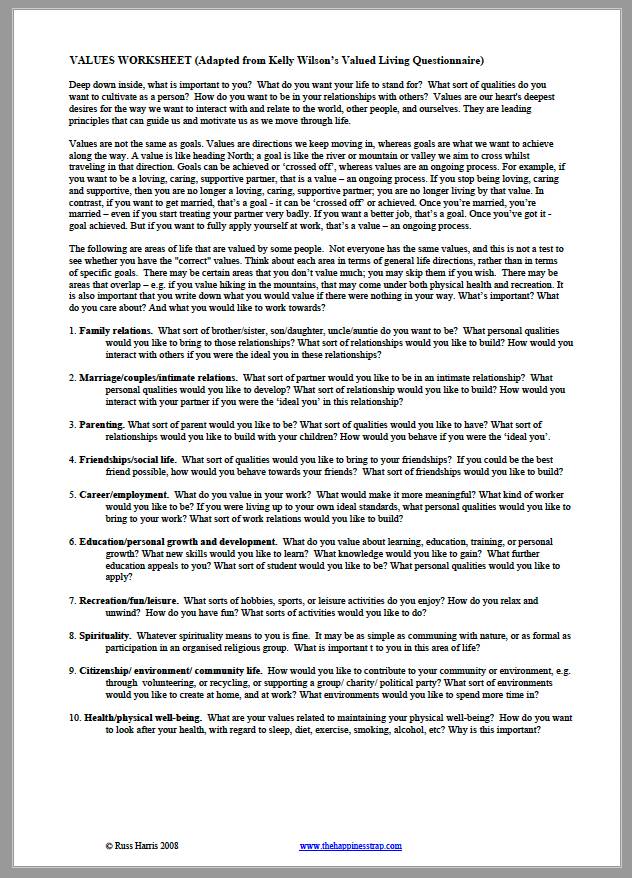Self-Compassion: Week Three
Values and Putting this Into Practice
Topics/Agenda: Week Three
- How do we define values?
- The difference between values and goals.
- Values and self-compassion
- Values clarification worksheets
- Strategies for self-compassion
- Physical strategies
- Cognitive and emotional strategies
- Final journal prompt – barriers to self-compassion
Values
Values clarification work encourages us to identify what is important to us and how we want to live our lives. As we engage in greater self-compassion, we will want to build a life that we are excited to live. For the purposes of our work, we will define values as the compass that defines which direction we want our life to go in. This does not mean that our values are goals, quite different actually as our values actual will define why our goals are important to us. For example, we may have a goal to complete our education. But our values that define this are obtaining knowledge and challenging ourselves.
The following video helps to define the difference between our values and goals.
As you build awareness around your values, you may find that not all of them line up with the expectations that others have for you. It is important that you take time to reflect and choose what is most important to you and why these values are important to you. Two questions that can be helpful as you practice this are:
- What about this is important to me?
- Where is this value coming from/what is this value rooted in?
Further, your values may shift over time as your life circumstances change and as you grow as a person. It is ok to acknowledge that your values can be “held lightly” allowing them to shift over time.
Values and Self-Compassion
Knowing your individual values can serve an important role with self-compassion. When we are aware of how we want to be in the world, then we can better assess when we need to gentle with ourselves. Practice self-compassion will free you up to focus on what is important in your life and knowing your values will make those choices easier.
Putting Self-Compassion to Practice
Physical Strategies
The importance of physical touch is often discounted when it comes to soothing yourself. As mammals, humans respond very well to physical methods of self-soothing. You are encouraged to find the strategy that works well for you and can begin with the suggestions below.
- Holding your own hands
- Giving yourself a huge
- Rubbing your arms
- Holding a warm cup of tea or coffee
Cognitive and Emotional Strategies
Using what you have learned up until this point will support you in beginning to increase your self-compassion. Developing insight into your patterns can also be helpful and you can begin with the below two questions.
- What in my history has led me to this point?
- How is this behavior adaptive?
Additional strategies including responding to yourself as you would respond to someone you love or responding to yourself as you would respond to a 4-year-old. For example, if 4-year-old you was struggling with being kind to themselves after something went wrong, how might you soothe them that helped them to manage their emotion and move forward?
Final Journal Prompt
- What might that balance look like for you?
- How might you use these strategies to check in with yourself about that balance?
Find another Healthy Lakers Virtual Workshop



